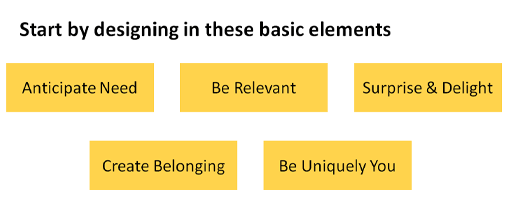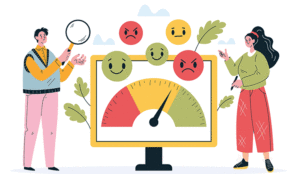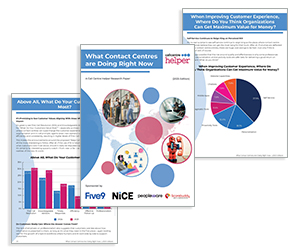Customer experience is more than just solving problems—it’s about how customers feel at every touchpoint. Sentiment plays a crucial role in shaping loyalty, trust, and advocacy.
When contact centres understand and design for emotion, they create stronger connections that go beyond simple transactions.
To find out more, we asked Katie Stabler, Founder and Director of Customer Experience at CULTIVATE Customer Experience by Design, to explain how companies need to use sentiment when designing the customer experience.
Video: How to Design for Sentiment
Watch the video below to hear Katie explain how to design for sentiment when transforming CX:
With thanks to Katie Stabler, Founder and Director of Customer Experience at CULTIVATE Customer Experience by Design, for contributing to this video.
This video was recorded when Katie was a panellist on our 2022 webinar ‘How to Transform CX‘
5 Steps to Design for Sentiment
Designing for sentiment isn’t about one-off gestures – it’s about consistently shaping interactions that evoke positive emotions.
“Well, you’ve got to start with the basics first. These are basics, but they’re essential. So just to go through each of these.”
Here are key steps to design for sentiment in customer experience:

1. Anticipate Customer Needs
Customers want convenience and accessibility. It’s not enough to offer multiple communication channels, so you need to be where your customers actually are. If they prefer WhatsApp over email, your business should adapt accordingly.
Anticipating their needs before they have to ask builds trust and reduces frustration, as Katie explains:
“Anticipate need by being accessible where and when your customers need you. It’s great saying we’re going to go off and do live chat on this channel, but actually, if your customers are on WhatsApp, then you’re not anticipating their needs.”
2. Be Relevant
Customers engage with businesses that provide useful and meaningful interactions. Instead of sending generic messages or promotions, focus on what they actually need.
“Be relevant, share information and services that your customers need and want.”
Whether it’s personalised recommendations or timely support, relevance enhances engagement and loyalty.
3. Surprise and Delight
Exceeding expectations doesn’t require grand gestures.
“Surprise and delight. Exceed expectations. This can come in small, low-cost ways. It doesn’t need to be these big, huge, flashy things.”
Small, thoughtful actions – such as a handwritten note, a proactive solution, or a personalised discount – can leave a lasting impact. The goal is to make customers feel valued and appreciated.
4. Create a Sense of Belonging
Customers are more likely to stay loyal when they feel emotionally connected to a brand.
“And create belonging by being personalized and making your customers feel an affiliation to you. Make sure you are a brand that they want to be connected with.“
Personalisation plays a big role in this – when customers feel understood, they build stronger attachments.
Creating a sense of community, whether through loyalty programmes or personalised interactions, reinforces this connection.
5. Be Uniquely You
A brand with personality stands out. Customers don’t just connect with products or services – they connect with stories, values, and people.
“And then lastly, be uniquely you. Show your personality, and customers will be more likely to emotionally invest.
And when I say show your personality, I mean this on two levels, your brand level, your brand personality, but also you as individuals.”
Showcasing your brand’s identity, alongside authentic and personable interactions from employees, helps build deeper emotional investment.
See the Experience Through Your Customer’s Eyes
It’s easy to focus on business goals and internal processes, but real sentiment-driven design starts with the customer.
- How do they feel at different stages of their journey?
- Are there pain points that create frustration?
By stepping into their shoes, businesses can identify opportunities to create more meaningful and emotionally engaging experiences.
If you are looking for more great insights from the experts, check out these next:
- How to Avoid the Fairness Trap When Creating Schedules
- How to Decide Who Should Record IVR Messages
- Defining a Customer Experience (CX) Code
- Two Types of Team Player
Author: Robyn Coppell
Reviewed by: Hannah Swankie
Published On: 11th Oct 2022 - Last modified: 12th Jun 2025
Read more about - Video, Customer Experience (CX), Digital Channels, Environment, Katie Stabler, Videos




















